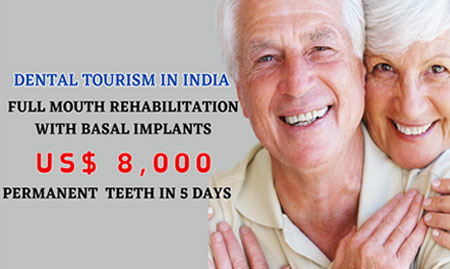
Dr. K Sharada Reddy, Author
Senior Dentist & Full Mouth Rehabilitation Expert
Unveiling the Drawbacks of All on 4 and How the CPBCCI Protocol™ is Redefining Full Mouth Rehabilitation
Fixed teeth on Full-mouth dental implants can be achieved with All-on-4 or All-on-6 techniques using Conventional Implants. Both approaches offer a fixed, non-removable solution for patients missing all or most of their teeth in an arch. However, there are distinct differences that impact long-term results, function, and durability. This guide provides a detailed comparison of All-on-4 vs. All-on-6 techniques to help patients make informed decisions.
1. What Is the All-on-4 Technique?
The All-on-4 dental implants technique involves placing four dental implants strategically in each jaw to support a full-arch fixed prosthesis.
Key Features of All-on-4:
Number of Implants: 4 implants per jaw.
Placement Angle: Two implants placed vertically in the front and two at a 30°–45° angle in the middle of the jaw.
Bone Requirements: Often avoids bone grafting as implants are placed in the anterior region, avoiding sinus lifts.
Healing & Functionality: Immediate loading may not be possible due to uneven implant distribution.
Common Prosthesis Materials: Acrylic with a titanium bar, Zirconia, or hybrid composite.
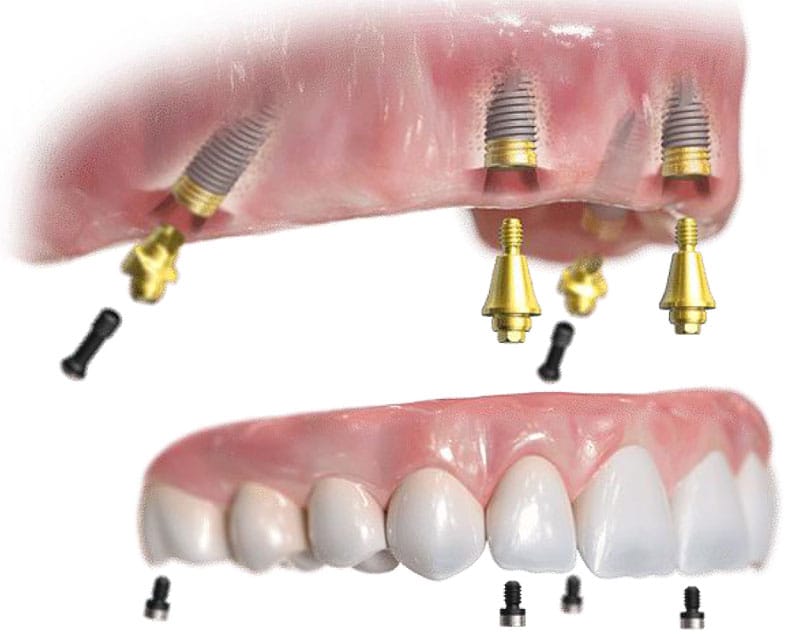
Pros of All-on-4:
- Minimally invasive: Fewer implants mean shorter surgery time and reduced recovery.
- Cost-effective: Uses fewer implants, reducing overall treatment costs.
- Avoids Sinus Lifting or Grafting: Angled implants utilize available bone.
Cons of All-on-4:
- Less Stability in the Long Run: Fewer implants mean each implant bears more load, affecting longevity.
- Limited Upgradability: Implant failure makes adding more implants challenging.
- Less Bone Support: Full arch supported by only four implants.
- Cantilever Effect: As the implants are placed only till the premolar or the 4th or 5th tooth region and is mandatory to replace molars for proper chewing efficiency, Missing implant support for the molar may lead to implant overload and failure.
- Reduced Chewing Efficiency: Some doctors limit teeth to 10 instead of 14 in each jaw.
- Delayed Loading: Requires a temporary prosthesis for months followed by the fixation of the permanent prosthesis, this procedure of giving two sets of teeth increases the costs.
2. What Is the All-on-6 Technique?
The All-on-6 dental implants technique places six implants in each jaw, extending support to all the teeth including the rear molars.
Key Features of All-on-6:
- Number of Implants: 6 implants per arch.
- Placement Angle: Typically all vertical, sometimes slightly angled.
- Bone Requirements: Requires more bone, may need grafting and sinus lifts.
- Healing & Functionality: Immediate loading is often possible, but some cases require a 4–6 month healing period.
- Common Prosthesis Materials: High-quality Zirconia on titanium framework or titanium-reinforced hybrid prostheses.
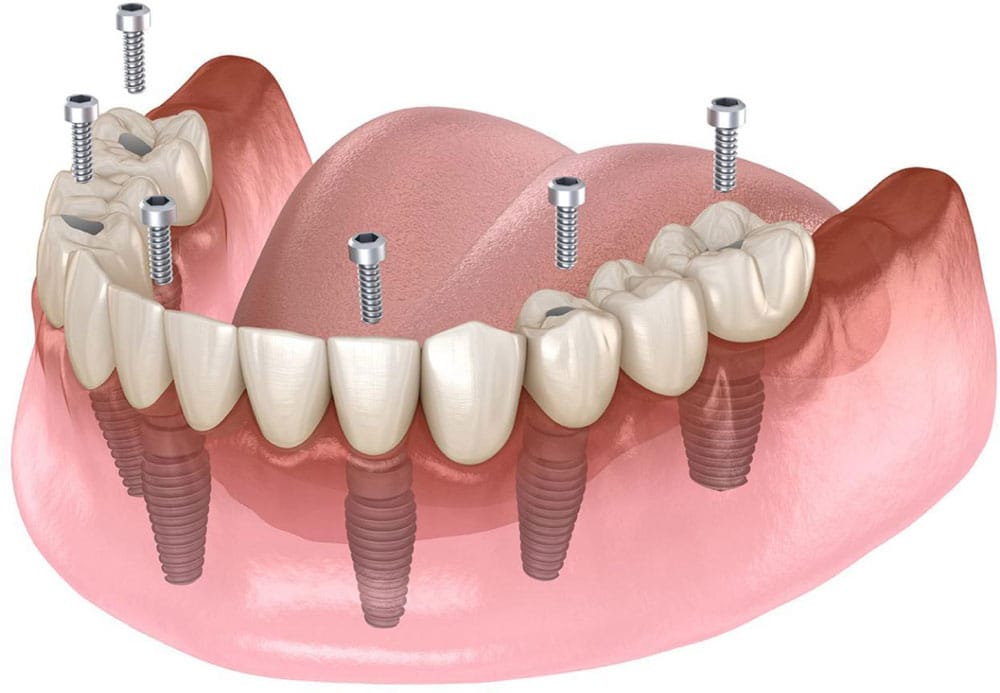
Pros of All-on-6:
- Better Long-Term Stability: Distributes chewing forces more evenly.
- Stronger Support for Prosthesis: Full arch of teeth is well supported.
- Reduced Overloading Risk: Six implants lower failure chances.
- Future-Proof: If one implant fails, others can still provide support.
Cons of All-on-6:
- Higher Cost: Additional implants increase costs.
- May Require Bone Grafting: More bone volume is needed.
- Longer Procedure & Healing Time: More implants along with added surgeries like Sinus lifts and bone grafts means longer treatment duration and recovery period.
3. Key Differences Between All-on-4 and All-on-6
| Feature | All-on-4 | All-on-6 |
| Number of Implants | 4 per arch | 6 per arch |
| Implant Placement | Two straight in front, two angled | Typically all vertical |
| Bone Requirements | Works with less bone, avoids grafting | Requires more bone, may need grafting |
| Stability | Adequate but weaker over time | More stable |
| Longevity | Higher risk of failure if one fails | Higher success rate |
| Suitability for Heavy Chewers | Less ideal | More ideal |
| Cost | Affordable | Expensive when compared to All on 4 |
4. Which One Is Better for You?
Choose All-on-4 if:
- You have significant bone loss.
- You want to avoid additional surgeries.
- You need a more affordable solution.
- You do not mind delayed loading of teeth.
Choose All-on-6 if:
- You want a more stable, long-term solution.
- You have sufficient bone for six implants.
- You do not mind undergoing invasive procedures.
- You have a strong bite or grind your teeth.
- You want to minimize implant failure risks.
5. Cost Comparison: Is All-on-6 Worth the Extra Investment?
All-on-6 requires additional implants and possibly bone grafting, making it more expensive. However, it offers better long-term stability, reducing future costs related to repairs or replacements.
6. CPBCCI Protocol™: The Best Alternative to All-on-4 and All-on-6
The CPBCCI Protocol™ eliminates the drawbacks of both All-on-4 and All-on-6 by offering immediate loading, stability, and cost-effectiveness.
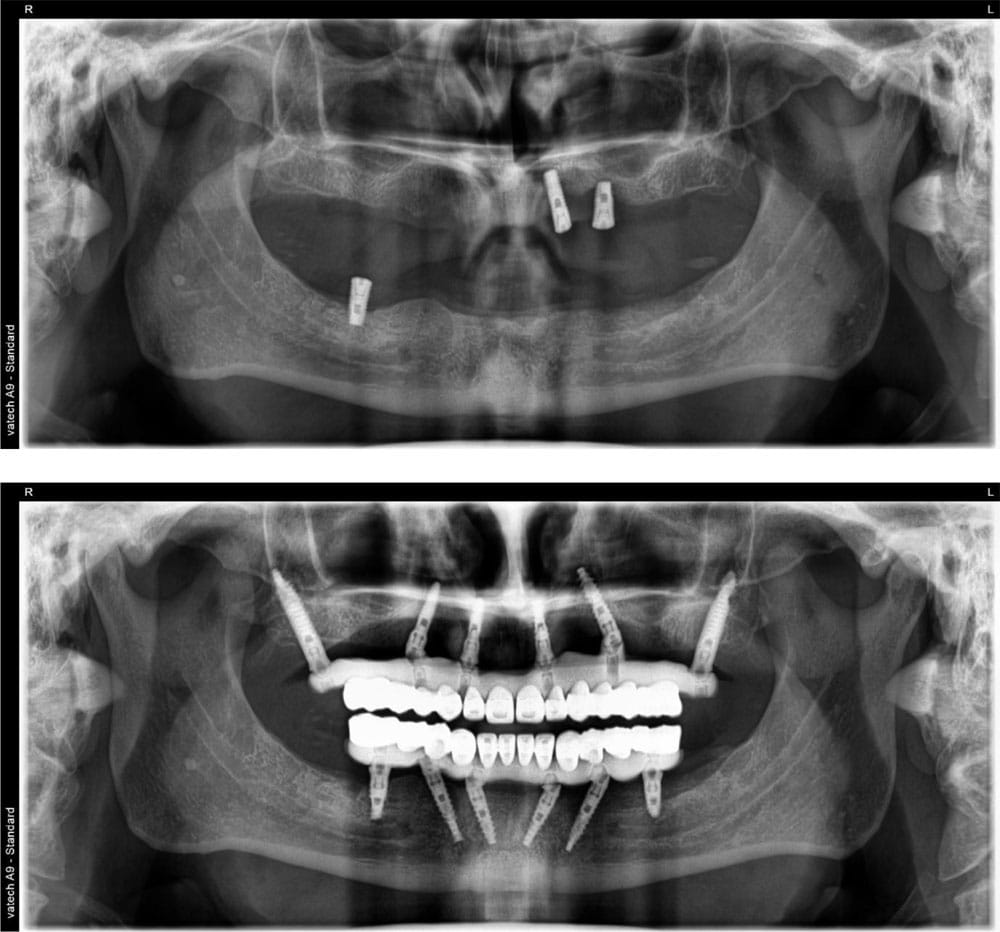
ALL ON 6 WITH CPBCCI PROTOCOL™
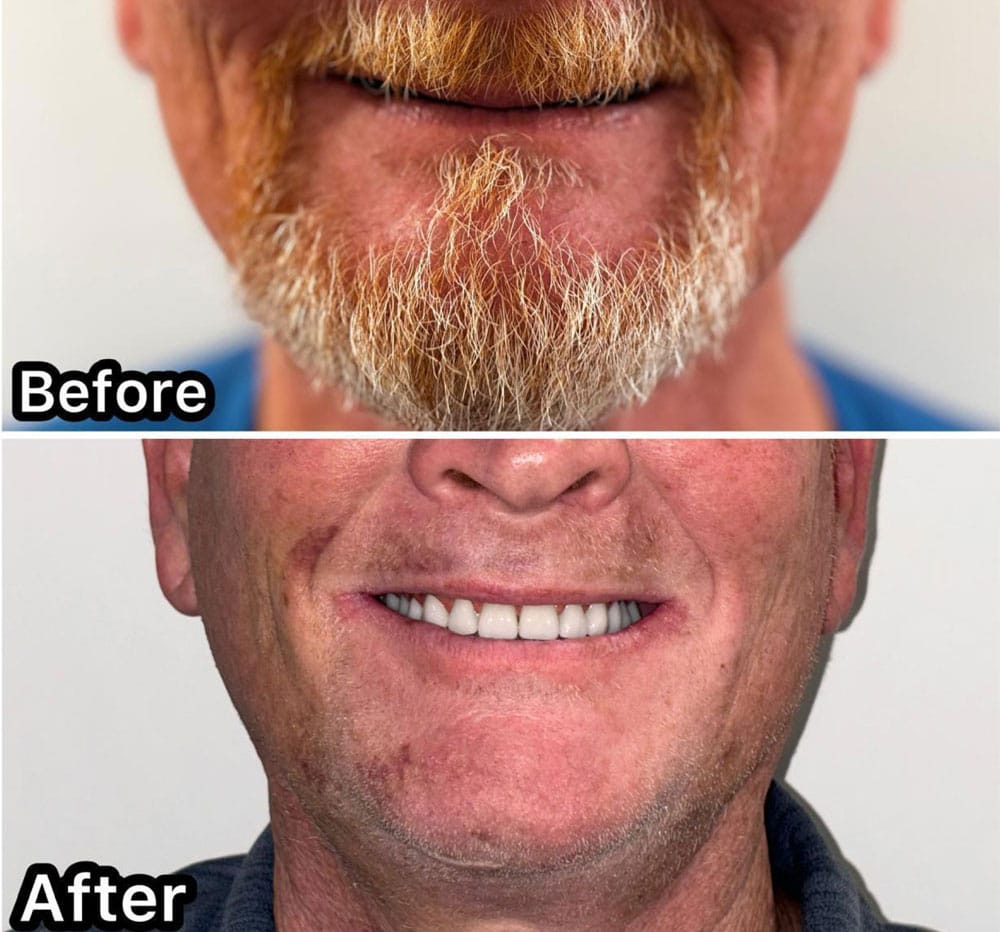
How CPBCCI Protocol™ Works:
- Uses conventional implants with a polished collar and rough implant body.
- Places implants at strategic angles to avoid sinus lifts and Bone grafting in the upper and nerve repositioning and Bone grafting in the lower.
- Incorporates Tubero-pterygoid implants for superior stability and to avoid cantilevers there by providing supreme stability and immediate loading capability.
- Uses basal bone for immediate loading and higher success rates.
- Prevents peri-implantitis through its polished collar design.
- Works even for patients with little to no bone using Zygomatic, Pterygoid, and Nasalis implants.
- Safe in Diabetic patients and also in individuals who smoke because of the special design and the placement technique of the Implants.
- Utilizes individuals own rigid native bone and not the unpredictable grafted bone. Grafted bone requires additional surgical procedures and a waiting period for the bone to stabilize and support the Implants.
Cost-Effectiveness of CPBCCI Protocol™:
- Avoids costly Bone grafting and Sinus lifts.
- Immediate loading reduces expenses related to interim dentures and travel.
- Requires only a single visit of 7–10 days for a complete restoration with fixed permanent teeth.
Conclusion: A Long-Term Perspective
The CPBCCI Protocol™ provides a stable, durable, and cost-effective alternative to All-on- 4 and All-on-6. By utilizing bi-cortical engagement, it ensures immediate loading without bone grafting, even in cases of severe bone loss. With higher success rates, better load distribution, and a natural bite, CPBCCI stands out as the ideal choice for full mouth rehabilitation.

